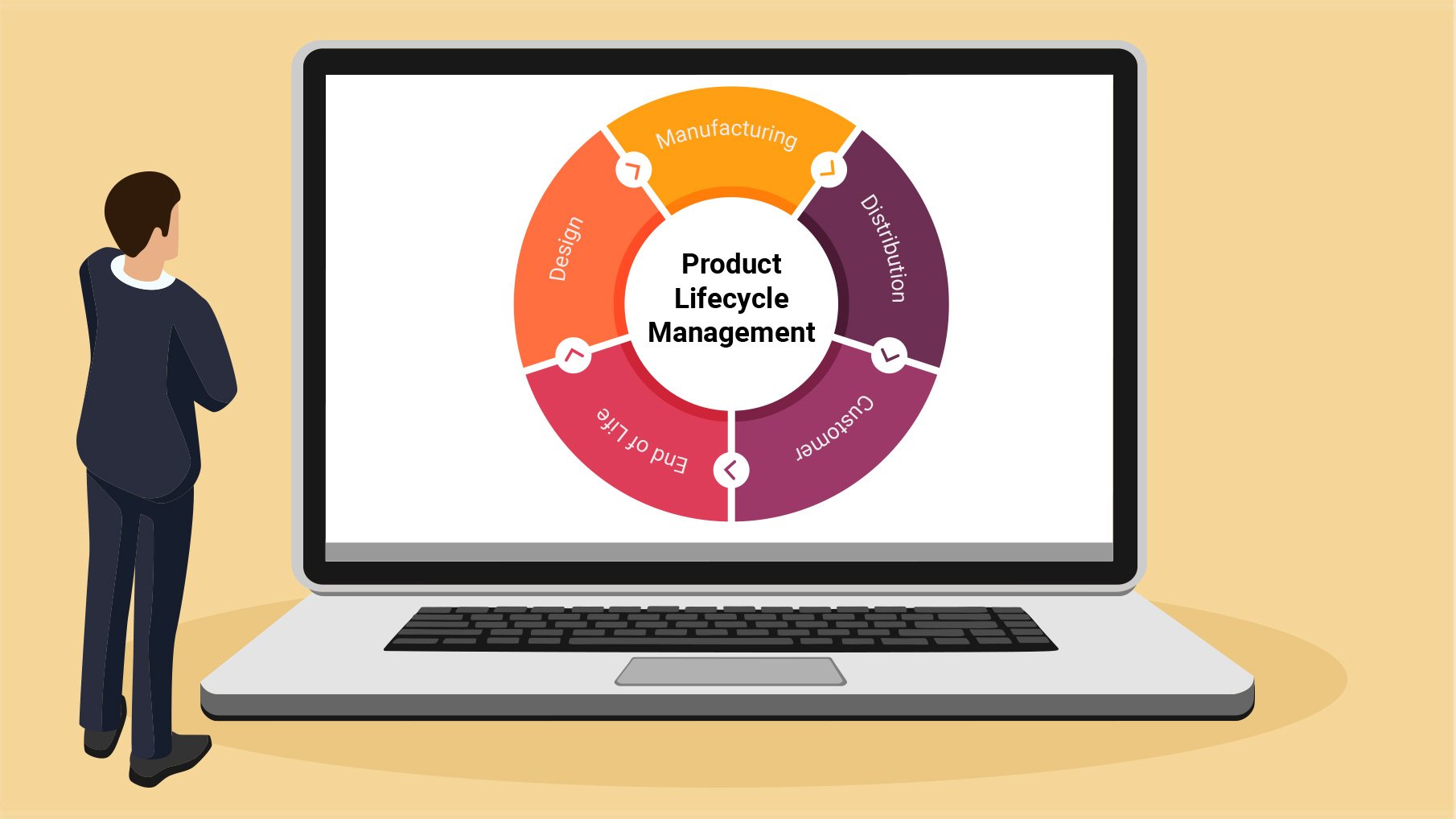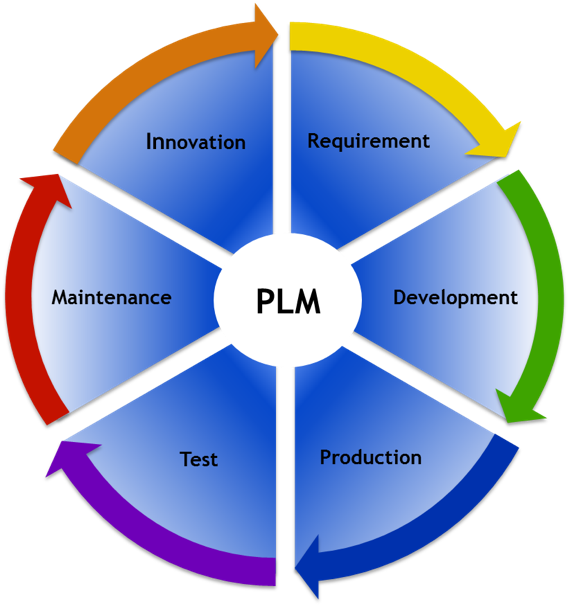Today, products and services have become highly complex and advanced which has led to organizations implementing various strategies and plans to ensure that they stay ahead of their competitors. These strategies help in ensuring that the product provides maximum benefits to its users. Before a product is introduced in the market, organizations need to focus on several key areas, such as keeping in mind the costs involved, the ability to scale the product, maintaining communication and collaboration between various teams, focusing on the compliance standards, and more. In order to achieve all these efficiencies, companies need to depend on strong product lifecycle management software to digitize their various production processes. In this post, find out what is product lifecycle management software, some of its key benefits, and which are the top six product lifecycle management software to use in 2022.
Table of Contents
What is Product Lifecycle Management Software?

A Product Lifecycle Management (PLM) software is a robust platform, offering a set of tools and functionalities which help in the conceptualization, execution, and disposal of a product in a systematic and efficient manner. A PLM software is used to track the complete lifecycle of a product – right from its designing stage to its retirement stage and all that is in between.
Apart from using the software to track and manage the products, organizations can also take advantage of this software to automate various manual processes, maximize their efficiency, explore options that are cost-effective, provide ample time for developers to focus on innovation, and more. The majority of the companies today use PLM software to boost their productivity, quality, creativity, and collaboration.
Key Benefits of Product Lifecycle Management Software

Here are some of the key benefits of PLM software:
- Helps in increasing the output of your product.
- Acts as a central repository for all your product-related data management.
- Helps in boosting the quality of the product.
- Helps in implementing various measures that will result in higher revenue.
- A PLM software helps in streamlining and accelerating the entire process of product development and management.
Top 6 Product Lifecycle Management Software
PLM software has become a boon for businesses of sizes and types which is why they have the option to choose between several PLM software available in the market today. To make your job easier, we have conducted the required research and listed down the top six product lifecycle management software to use in 2022.
1. Siemens Teamcenter
The Siemens product lifecycle management software is considered as one of the top PLM software currently available in the market today. Best known for its change management feature, ease in use, and integration with a CAD system, this PLM software works well for businesses of all sizes – from small to medium to large enterprises. Siemens Teamcenter is a cloud-based PLM that provides all the required features and functionalities of a product lifecycle management software. It comes with an intuitive interface that allows people from across the organization to take part in the product development process.
Features
Some of the key features of Siemens Teamcenter include:
- Automate design creation
- Collaboration
- Bills of Material (BOM) management
- Quality management
- Augmented Reality Tool
- Electrical design management
- Platform structures
- Change management
- Document publishing
- Report generation
- Compliance management
- Project management
- Audit history
- Version control
Pros
- Siemens Teamcenter is a user-friendly PLM software that offers VisMockup – an amazing tool for reviewing 3D CAD models.
Cons
- The user interface of Siemens Teamcenter looks old-fashioned and needs to be modified to suit the modern needs of the businesses.
Pricing Plan
Siemens Teamcenter offers quotation-based custom pricing. To know more, you can visit their official website.
2. PTC Windchill
PTC Windchill is a web-based PLM software that is extremely popular among businesses of all sizes. Compatible with Linux, UNIX, and Windows, this PLM software offers PLM as well as product data management solutions. You can perform a wide range of product lifecycle management functionalities using this software, such as view and markup data in 2D and 3D, share and collaborate in real-time, perform cost estimation and analysis, and more. PTC Windchill is highly automated which helps in eliminating redundant manual tasks. This all-in-one PLM is one of the best tools that organizations can use to boost their revenues and drive value throughout the organization.
Features
Some of the key features of PTC Windchill include:
- Document publishing
- Quality management
- Platform structures
- Report generation
- Bill of Material (BOM) management
- Audit history
- Change management
- Automate design creation
- Collaboration
- Electrical design management
- Product analytics
- Project management
- Design management
- Augmented reality
- 3D visualization
- Data visualization
Pros
- One of the key advantages of PTC Windchill is the integration between Creo and Windchill.
Cons
- There is no option to add multiple parts while creating the Bill of Material.
Pricing Plan
PTC Windchill offers custom pricing. To know more, visit their official website.
3. Arena PLM
Arena PLM is a cloud-based product lifecycle management software that provides a single platform for organizations to organize product information, related processes, and teams to ensure that their product design, development, and deployment go off smoothly. Since it is cloud-based, users can access the software at any time and from anywhere. Arena PLM offers several unique features, such as Arena Demand, Scribe, etc. It also ensures that organizations are in compliance with all the required safety guidelines and regulations. This is definitely one of the top product lifecycle management software that allows businesses to easily and seamlessly design, manage, production, and deliver their products.
Features
Some of the key features of Arena PLM are:
- Audit history
- Report generation
- Product data management
- Document publishing
- Quality management
- Platform structures
- Collaboration
- Change management
- Automate design creation
- Bills of Material (BOM) management
- Supplier management
- Compliance management
- Cost tracking
- Reporting/Analytics
- Requirements management
Pros
- Arena PLM offers amazing document control which makes it easy for the users to update the various versions and access them easily by accessing the master document.
Cons
- More flexibility is required with regard to developing custom workflows.
Pricing Plan
Arena PLM offers two packages – Arena PLM Launch and Arena PLM Scale. To find out about the prices, you can visit their official website and request a demo as well.
4. Oracle Agile
Oracle Agile is one of the most comprehensive product lifecycle management software available in the market today. Businesses can use this PLM software to boost their profits, streamline various product processes, centralize all their data, and create high-quality products. This cost-effective PLM solution is an easy-to-use tool that can be easily customized to gain maximum visibility about your product data. Oracle Agile is suitable for all types and sizes of businesses – from small to medium to large enterprises. This PLM software also offers mobile applications which make it easy for the user to access their required data whenever they need it and at any time. This is one of the top product lifecycle management software that enables businesses to improve their product quality and achieve their targets systematically and successfully.
Features
Some of the top features of Oracle Agile include:
- Document publishing
- Electrical design management
- Product data management
- Bills of Material (BOM) management
- Change management
- Audit history
- Quality management
- Collaboration
- Automate design creation
- Report generation
- Cost tracking
- Requirements management
Pros
- Oracle Agile is a very stable platform that can handle huge amounts of information once the software is set up.
Cons
- One of the major concerns with Oracle Agile is that it does not have a very modern and intuitive interface.
Pricing Plan
Oracle Agile offers quotation-based custom pricing. You can find out more information on their official website.
5. Propel PLM
Propel PLM is a secure product lifecycle management software that offers a wide range of PLM features. It provides the perfect unified platform for employees and customers to collaborate with each other on various projects. Organizations can use Propel PLM to perform various functions, such as analyzing various ideas across the organization, tracking change order history, certifying employees and other key people by providing training and documentation, determining the impact on various product milestones, etc. If you are looking to take your business to greater heights, Propel PLM is definitely one of the best product lifecycle management software to get the job done for you.
Features
Some of the key features of Propel PLM include:
- Collaboration
- Report generation
- Quality management
- Change management
- Requirements management
- Bills of Material (BOM) management
- Audit history
- Task management
- Product information management
- Automate design creation
- Document publishing
Pros
- One of the key advantages of Propel PLM is that it is built completely on Salesforce which makes it really easy to customize and tailor as per your business needs.
Cons
- The search and reporting features need to be more enhanced and made user-friendly.
Pricing Plan
- Propel PLM offers quotation-based custom pricing. You can visit their official website to gather more information about their prices.
6. Upchain PLM
Upchain PLM is another cloud-based product lifecycle management software that is best known for its project dashboards and built-in workflow management. This PLM software is ideal for small and medium-sized businesses and enables them to collaborate effectively across the organization regarding product design, production, management, and deployment. From sharing Bills of Materials (BOM) in real-time to uploading, tracking, and controlling CAD for all the products to push and pull product information across various tools and software via its open-source API to staying on top of everything with the help of their in-built, intuitive dashboard – there is a lot that you can do with Upchain PLM.
Features
Some of the key features of Upchain PLM are:
- Change management
- Compliance management
- Cost tracking
- Project management
- Requirements management
- Design management
- Document management
- Supplier management
- Collaboration
- Bills of Material (BOM) management
- Augmented reality tool
- Automate design creation
- Report generation
- Document publishing
Pros
- Compared to some of the other top product lifecycle management software, Upchain PLM has a more robust team that provides quick resolutions and support.
Cons
- Upchain PLM is a detailed PLM software; hence, it would be great if they could provide a more hands-on demo rather than just a video introduction.
Pricing Plan
Upchain PLM offers three different plans – Standard, Premium, and Enterprise. All their plans are quotation-based, and you can visit their official website to find out more details about these plans and how much they will cost.
Conclusion
All the product lifecycle management software listed above is currently the best in the industry that allows organizations to better collaborate and connect with the teams, data, and processes. A PLM software helps in streamlining the entire lifecycle of a product, thus, ensuring a higher chance of product success.
If you are interested to find out more about such useful software, we recommend you check out SaaSworthy which houses information about more than 40,000 software across 300 categories!
Also read:





![10 Best Free and Open-Source Landscape Design Software in 2024 [Updated] SaaSworthy Blog Header](https://images.saasworthy.com/blog_latest/wp-content/uploads/2021/04/Blog-Header-Image.png)
